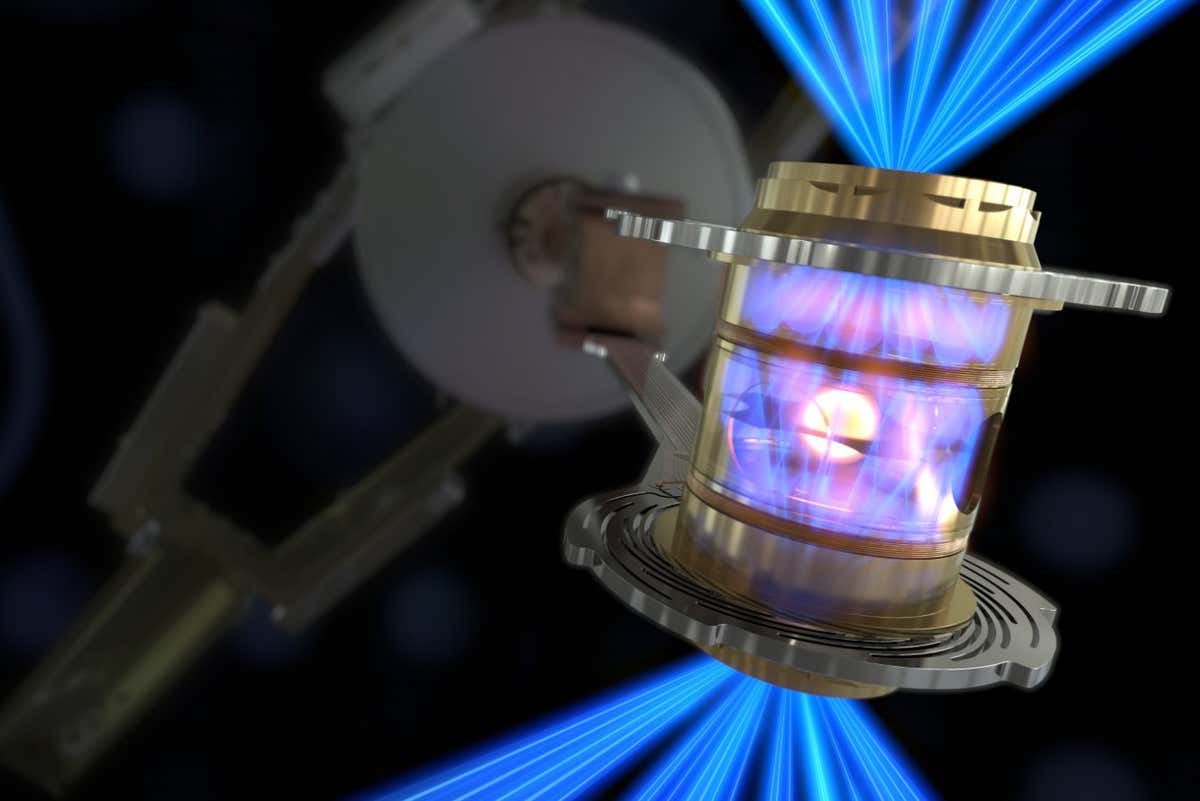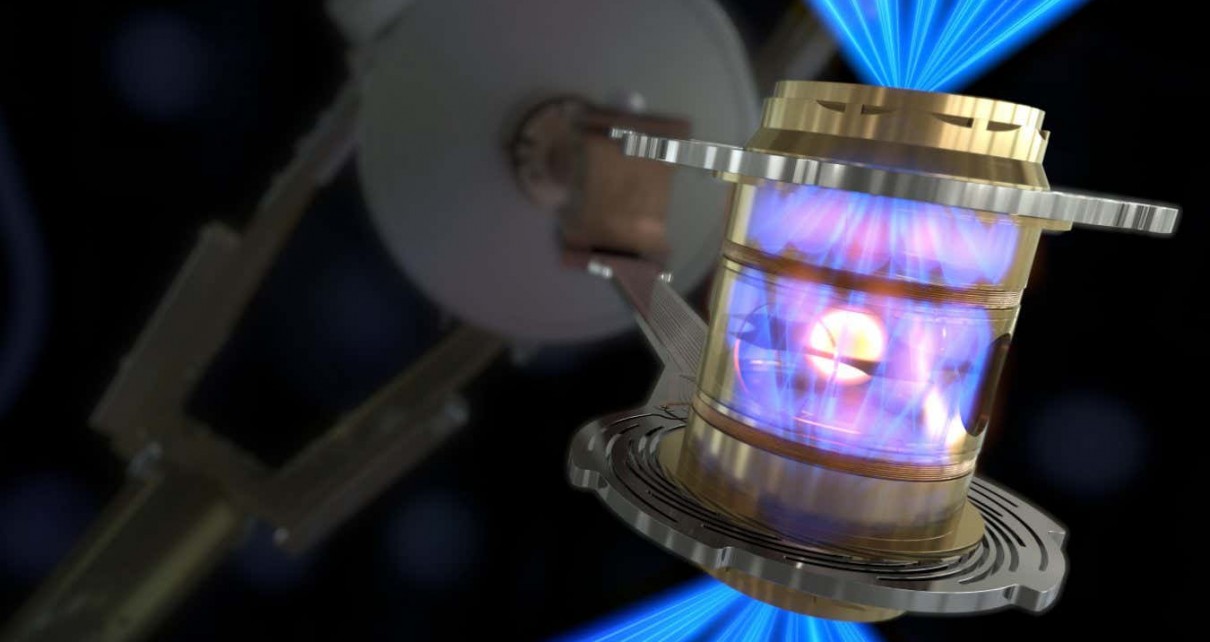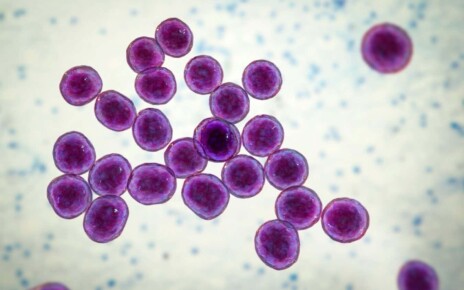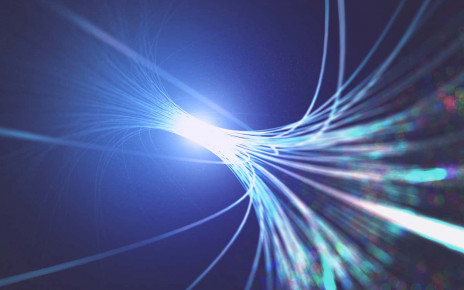[ad_1]

The US National Ignition Facility uses lasers to compress a fuel capsule
Lawrence Livermore National Laboratory/Shutterstock
A breakthrough fusion experiment has produced a net gain in energy for only the second time ever and with improved performance over the first successful attempt. But before you get excited about the coming era of unlimited clean energy, there are some important caveats to keep in mind.
What’s so good about fusion power?
Today’s nuclear power plants rely on fission reactions, where atoms are smashed apart to release energy and smaller particles. Fusion works differently, by squeezing smaller particles together into larger atoms – the same process that operates within our sun. Fusion can create more energy, with no radioactive waste, but containing and controlling such a reaction has proven to be a monumental problem for both physicists and engineers.
What has happened and what is ignition?
In December 2022, researchers at the Lawrence Livermore National Laboratory (LLNL) in California reached a historic milestone: they got more energy out of a fusion reaction than they put in. The lab’s National Ignition Facility (NIF) fusion reactor used lasers to create enough heat and pressure to turn deuterium and tritium – isotopes of hydrogen – into a plasma in which fusion could occur. These lasers output 2.1 megajoules of energy, but the reactor produced about 2.5 megajoules, roughly a 20 per cent increase. While those numbers are nowhere near the sort of ratio you would need to run a commercial reactor, it offered a vital glimmer of hope that fusion reactors were a viable goal.
Now the lab has reportedly created a second ignition – the term for a reaction that surpasses break-even – and improved on those numbers with the reactor producing around 3.5 megajoules. The experiment occurred on 30 July, according to a report in the Financial Times.
“Since demonstrating fusion ignition for the first time at the National Ignition Facility in December 2022, we have continued to perform experiments to study this exciting new scientific regime. In an experiment conducted on July 30, we repeated ignition at NIF. Analysis of those results is underway. As is our standard practice, we plan on reporting those results at upcoming scientific conferences and in peer-reviewed publications,” a LLNL spokesperson told New Scientist.
Does this mean fusion power has been solved?
In short, no.
One problem is that while the reactor’s output is higher than the laser’s output, the lasers themselves are very inefficient. To create 2.1 megajoules of energy they draw 500 trillion watts, which is more power than the output of the entire US national grid. So a significant challenge for the future is to create a reaction that breaks even with its total energy requirements, and not just the final laser stage.
Another issue is that the NIF reactor can fire only once, for a few billionths of a second, before it has to spend several hours cooling its components in order to be switched on once more. A commercial reactor would have to run nearly continuously with multiple ignitions a second.
And, of course, even once a reactor can run for long periods and offset its true energy requirements by the lasers, it would still only be breaking even. For fusion to become a viable alternative to existing power sources, we must be able to extract a large amount of net energy – enough to make the enormous cost of building it worthwhile.
What are people saying?
Jeremy Chittenden at Imperial College London says that most physicists see a 2021 experiment from LLNL, where this type of reactor was proven to be able to work at all, regardless of output, as the real milestone.
“The result from December last year was the first time we got more energy out than we delivered in, and so that was was taken as the bigger news story. But actually – scientifically – that was just a consequence of what they’d demonstrated the year before. And this is essentially you know, further amplification of that record yield,” he says.
Chittenden says the latest advances have come from controlling the reaction for longer periods, increasing the amount of energy that is extracted. Currently only a few percent of the fuel is burned in LLNL’s experiments.
“This is basically a successful demonstration that they’re now understanding how to control and hold the plasma there for longer and get more energy out,” he says. “You have to light the head of the match, get the burn process working, and then you just basically have to hold the match for as long as you can before you burn your fingers.”
Will fusion be solved in the future?
While it is still impossible to tell for sure, as there could be insurmountable problems ahead, there is more cause for optimism than ever before. The ignition milestone effectively proves that the science is sound, and makes the problem one of engineering rather than physics.
There are two main research approaches aiming to achieve viable nuclear fusion. One uses magnetic fields to contain a plasma, while the other uses lasers. NIF uses the second approach, known as inertial confinement fusion, where a tiny capsule containing hydrogen fuel is blasted with lasers, causing it to heat up and rapidly expand. But there are a host of startups working on unusual designs that all have the potential to break through. All these experiments are helping us to better understand the problem, and the best way forward.
Although we’re likely to see further efficiency improvements from the LLNL reactor, there will need to be fundamental changes to make such a design commercial, says Chittenden. ” It’s intrinsically inefficient because of this indirect approach, which is this conversion of lasers into X rays, means we have to heat a lot more material up than we would, for example, if we just used the lasers to heat the fuel directly.”
But one thing is clear: with a working fusion reactor still many years away at the very least, we cannot rely on the technology to solve the climate change crisis. Fusion reactors will be perhaps the greatest pay-off ever received from a coordinated research effort stretching back more than a century, but clean and abundant energy will have to come from renewable sources for the short and medium term.
Topics:
[ad_2]
Source link




